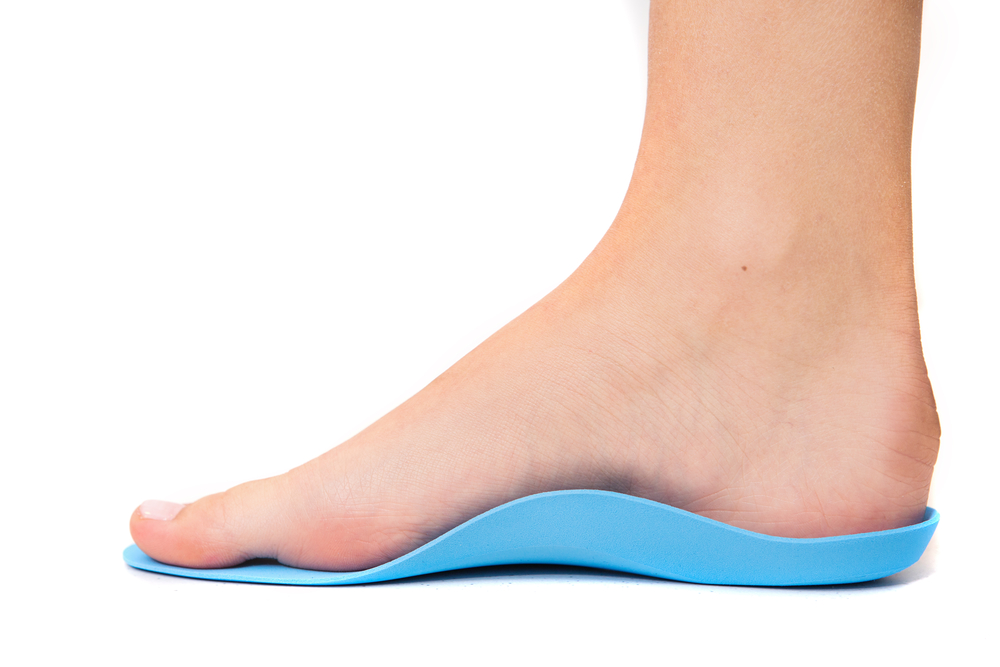
In the previous post, we discussed why proper foot biomechanics are so important to how the body functions. Foot and ankle injuries, disorders and deformities affect how we stand, walk and exercise. They create imbalances that can lead to pain in the knees, hips, back, and all the way up to the shoulders and neck.
That’s why our integrated, “bottom up” approach to evaluating the body’s structure and function begins at the feet and ankles. And that’s why podiatry is such an important part of what we do at Natural Healthcare Center.
While we always treat the whole person, not just the feet and ankles, there are a number of treatment options that podiatrist Dr. Nick Argerakis can recommend based on the root cause of the issue and the individual patient’s health and objectives. Here are 10 common ways we fix foot and ankle problems.
1) Rest, Ice, Compression, Elevation (RICE)
The fact is, many acute injuries can heal properly if you just follow the RICE treatment plan. Of course, it’s a good idea to have foot and ankle injuries examined by a podiatrist, especially if pain lasts for more than a few days.
2) Better Footwear
We often see a major reason for a patient’s pain based on the shoes they wear to their appointment. We always recommend that patients wear shoes with a built-in arch, cushioning on the insole, and enough flexibility to allow the foot to bend naturally. As adults, our two feet are rarely the exact same size, and they do grow, so measure both feet and choose your shoe size based on the bigger foot.
3) Orthotics
You can buy shoe inserts almost anywhere to provide additional cushioning and support, but inserts aren’t customized. Podiatrists prescribe orthotics – medical devices worn inside shoes to fix foot biomechanics and alleviate pain related to a number of conditions, including diabetes, plantar fasciitis, bursitis, arthritis and flat feet. Diagnostic imaging and a mold of your feet ensure the proper fit and the right kind of orthotics.
4) Physical Therapy
Performing certain exercises can help you increase strength, flexibility and range of motion in the muscles, tendons and ligaments in the feet and ankles. Physical therapy is often a critical part of a podiatrist’s treatment plan, whether you’re rehabbing after an injury or surgery or correcting a chronic condition.
5) Diabetic Treatment
People with diabetes are susceptible to reduced blood flow and damaged nerves in the feet and should have their feet checked annually. Wounds, ulcers and other diabetic food conditions need to be addressed as soon as possible to avoid serious complications.
6) Hard Skin Treatment
Corns and calluses are hard, thickened areas of the skin that are formed to protect the skin underneath. They’re caused by ongoing friction and pressure. Corns and calluses can be treated in a number of ways, from filing with a pumice stone to moisturizing with lotion to wearing properly fitting shoes. We’ll recommend the right approach based on your condition.
7) Clinical Nutrition
Yes, the food you eat can have a direct impact on the health of your feet and ankles and how well you respond to treatment. For example, if you have inflammation, an inflammatory diet that’s high in sugar, processed foods and harmful toxins will only make your condition worse. Clinical nutrition and supplements can even help you fight off toenail fungus.
8) Chiropractic Care
There are 33 joints in the human foot and ankle. Trauma, pressure and gradual wear and tear can throw the entire system out of whack. Chiropractors are trained to improve mobility, increase range of motion and flexibility, and restore proper function and balance in these joints.
9) Acupuncture
Acupuncture is commonly used to relieve foot pain and discomfort by stimulating energy and blood flow, as well as the release of endorphins, the body’s natural painkillers. However, acupuncture can also be used in combination with other podiatry treatments to treat a wide range of conditions, from neuromas to plantar fasciitis.
10) Therapeutic Massage
Podiatrists often recommend foot massage to improve circulation, warm the muscles, reduce tension and relieve pain. Massage can also aid in rehabilitation from injuries and accidents.
Although we take a conservative approach to foot and ankle treatment, surgery could end up being the best option for some patients. Depending on the seriousness of your condition, how the condition is affecting your quality of life, and how you respond to other podiatry treatments, we’ll determine if surgery is the right course of action.
There are dozens of treatment techniques that we can incorporate into a personalized plan. If you’ve suffered an injury, you’re experiencing pain or discomfort in your feet and ankles, or you’re dealing with an embarrassing foot deformity, schedule a complimentary consultation at Natural Healthcare Center.